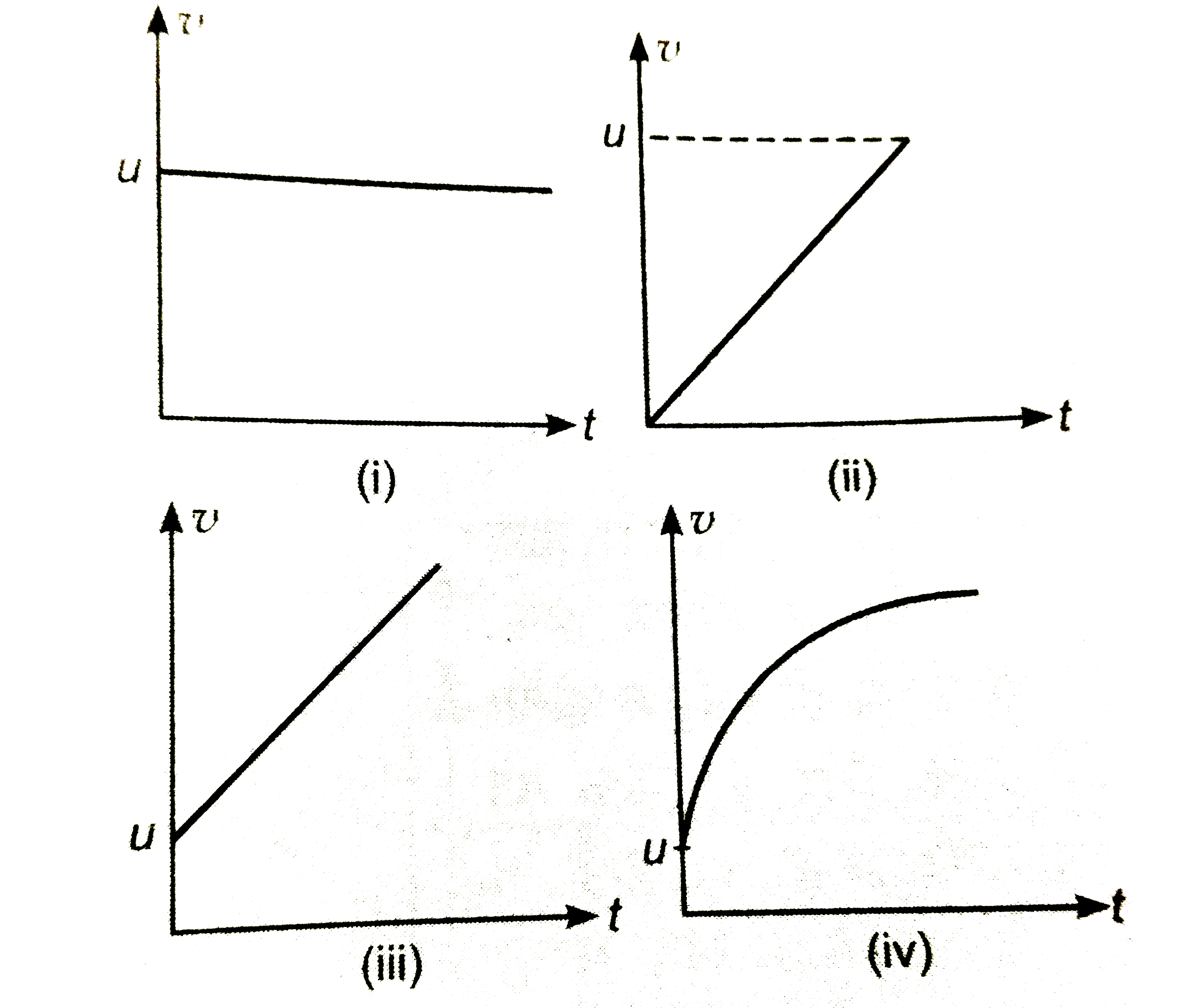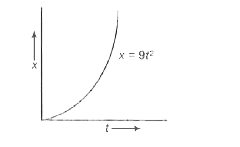Statement I : A particle moving with uniform acceleration has its displacement proportional to the square of time.
Statement II : If the motion of a particle is represented by a straight line on the velocity -time graph its acceleration is uniform.Solution in Bengali
Statement I is true, statement II is true , statement II is a correct explanation for statement I.
Statement I is true statement II is true , statement II is not a correct explanation for statement I.
Statement I is true, statement II is false.
Statement I is false, statement II is true.
The correct Answer is:B
Step by step video, text & image solution for Statement I : A particle moving with uniform acceleration has its displacement proportional to the square of time. Statement II : If the motion of a particle is represented by a straight line on the velocity -time graph its acceleration is uniform. by Physics experts to help you in doubts & scoring excellent marks in Class 11 exams.
Topper's Solved these Questions
- BOOK - CHHAYA PUBLICATIONCHAPTER - ONE - DIMENSIONAL MOTION EXERCISE - ENTRANCE CORNER (Multiple correct answers type )10videos
ONE - DIMENSIONAL MOTION
- BOOK - CHHAYA PUBLICATIONCHAPTER - ONE - DIMENSIONAL MOTION EXERCISE - ENTRANCE CORNER ( Comprehension type )3videos
ONE - DIMENSIONAL MOTION
- BOOK - CHHAYA PUBLICATIONCHAPTER - ONE - DIMENSIONAL MOTION EXERCISE - Hots Numerical Problems (Based on Rectilinear Motion)30videos
ONE - DIMENSIONAL MOTION
- BOOK - CHHAYA PUBLICATIONCHAPTER - NEWTONIAN GRAVITATION AND PLANETARY MOTIONEXERCISE - CBSE SCANNER19videos
NEWTONIAN GRAVITATION AND PLANETARY MOTION
- BOOK - CHHAYA PUBLICATIONCHAPTER - QUESTION PAPERS OF NEET -2017EXERCISE - QUESTION32videos
QUESTION PAPERS OF NEET -2017
Similar Questions
A body will speed up if
01:51View SolutionVertical rise or fall of a particle under gravity is governed by the equations : (i) v =u +gt, (ii) h = ut + 12gt2 , and (iii) v2=u2+2gh the symbols having their usual meanings. Then for a particle dropped from the top of a tower and falling freely. choose the correct options:
(i) The distance covered by it after n seconds is directly proportional to04:00View SolutionA car starting with velocity 10 m.s−1 attains an acceleration 1 m.s−2.
After what time interval will its velocity be 20 m.s−1 ?01:46View SolutionWhat is the reason for absence of atmosphere in some planets?
01:34View SolutionA molecule of a substance has permanent dipole moment p . A mole of this substance is polarised by applying a storg electrostatic field E . The direction of the field is suddenly changed of 60∘ . If N is the avogadro's number the amount of work done by the field is
01:20View SolutionA particle moves in a straight line with uniform acceleration. Its velocity at time t=0 is v_1 and at time t=t is v_2. The average velocity of the particle in this time interval is (v_1 + v_2)/2 . Is this statement true or false?
02:14View SolutionThe velocity of a particle moving in a straight line is directly proportional to 3//4th power of time elapsed. How does its displacement and acceleration depend on time?
03:07View SolutionThe acceleration-time graph of a particle moving along a straight line is as shown in. At what time the particle acquires its initial velocity? .
02:45View SolutionAssertion : The displacement-time graph of a body moving with uniform acceleration is a straight line. Reason : The displacement is proportional to time for uniformly accelerated motion.
01:49View SolutionThe graph between displacement and time for a particle moving with uniform acceleration is a
05:10View Solutionएक कण प्रारम्भिक वेग u से एक समान त्वरण के अन्तर्गत गति करता है। इसका वेग –समय ग्राफ है
 02:14View Solution
02:14View Solutionएक वस्तु एक सरल रेखा में एकसमान त्वरण से चल रही है । इसका वेग-समय ग्राफ होगा :
02:37View SolutionA particle is moving on a straight line such that square of its velocity is directly proportional to distance as shown in graph. What is the acceleration of the particle ?
02:51View Solutionएक सरल रेखा में गति करते हुए कण का विस्थापन-समय ग्राफ चित्र में दर्शाया गया है।

इस कण का त्वरण-समय ग्राफ है02:37View SolutionHow can you represent (i) motion with uniform velocity, (ii) motion with uniform acceleration and (iii) motion with uniform retardation in a velocity time graph?
03:20View Solution

